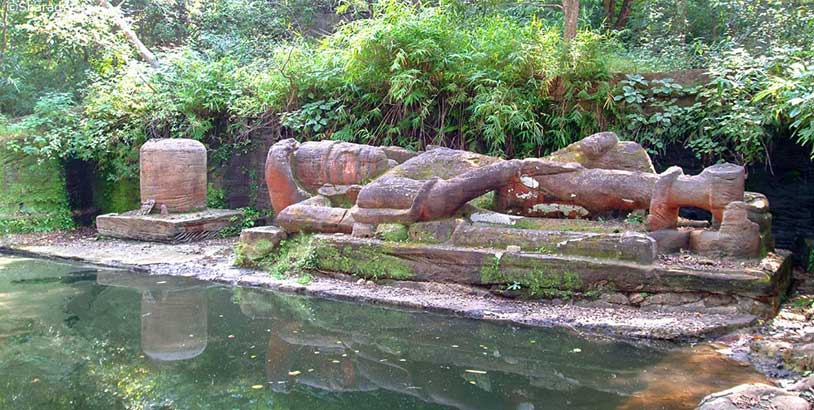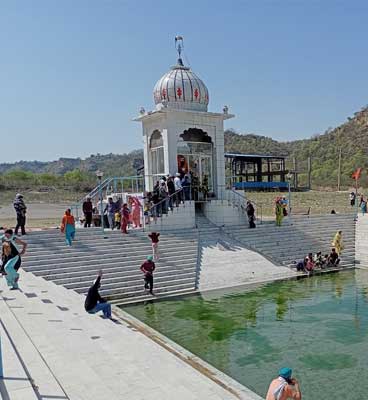Visit to Shesh Saiya
Bandhavgarh National Park is one of the highly celebrated wildlife destinations in India. Located in the central state of India, Madhya Pradesh, the national park is truly a centre of attraction nestled in the Umaria district. Bandhavgarh National Park has primarily bagged recognition among tourists, especially wildlife explorers, because of the thriving population of Royal Bengal tigers. Bandhavgarh is the abode to the highest population of tigers in Madhya Pradesh, making it a favoured destination among travellers. Along with tigers, there are several other species of wild animals as well as birds. However, the matter of fact is Bandhavgarh National Park is not famous only because of the teeming population of flora, fauna and avifauna, a blend of culture, history and mythology also exists inside the dense forest of the national park that becomes an integral part of the Bandhavgarh safari expedition.

Shesh Shaiya - The Statue of Sleeping Lord Vishnu
Bandhavgarh National Park is renowned for its natural wonders and cultural heritage, with one of the most remarkable attractions being the Shesh Shaiya statue. The name "Shesh Shaiya" translates to "the sleeping serpent," symbolising the colossal sandstone figure of Lord Vishnu resting upon a coiled serpent. This ancient 65-foot-long statue, an extraordinary achievement of art and engineering, has captivated visitors for centuries. Lord Vishnu is portrayed reclining on the serpent Shesha, symbolising the cosmic ocean. The statue's intricate carvings, from the serpent's detailed scales to the elaborate folds in Lord Vishnu's attire, reflect an exceptional level of craftsmanship.
The forests of Bandhavgarh hold intriguing stories from bygone eras, even though their dense tiger population limits access. Shesh Shaiya is the only location within the park where visitors are permitted to leave their vehicles and explore on foot. The origins of the statue date back to the Kalachuri Dynasty, and it is considered one of the finest examples of ancient Indian sculpture. This amazing piece shows how talented and artistic the craftsmen who made it are.
Beside the Vishnu statue is a Shiva Linga on the left and a representation of Brahma on the right, although the Brahma figure is largely covered by roots. The original intention was to establish a Trimurty, or Trinity of Gods, at this sacred site, a concept still evident today. The Vishnu statue is carved from a single block of sandstone, and from his feet flows the Charan Ganga, a perennial river that sustains the entire region. Referred to in ancient texts as the Vetravali Ganga, this river never runs dry, and the pond before the statue is always filled with water, evidenced by the presence of blue-green algae. As a permanent water source, the pond attracts tigers, leopards, and other wildlife, who come to quench their thirst year-round.


Historical Backdrop
Shesh Shaiya holds profound religious and cultural significance for Hindus, beyond being a mere tourist attraction. According to legend, this land was established as a fort by Lord Rama and gifted to his brother Lakshman following the war in Sri Lanka. The name "Bandhavgarh" reflects this bond, with "Bandhav" meaning brother and "Garh" meaning home. At a distance there is a spot on a hill, identified as the Sita Devi temple, believed to be where she resides. The story's origins are rooted in the Skanda Purana, lending it credibility.
Location of the Statue - Believed to date back to the 10th century, the Shesh Shaiya statue is carved from a single piece of rock. Shesh Shaiya lies along the path to Bandhavgarh Fort and is situated at the base of a small hill, surrounded by the verdant greenery and natural splendour of Bandhavgarh National Park. Visitors can reach the statue by ascending a series of steps, offering a closer view of the intricate carvings and fine details that adorn the sculpture.

